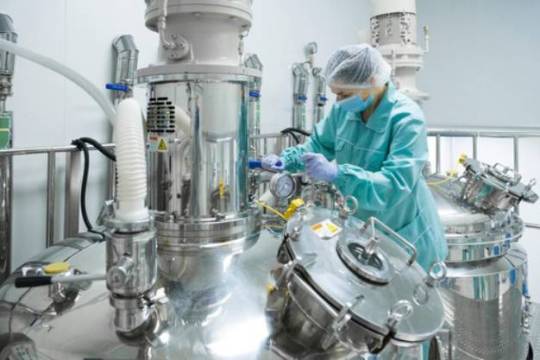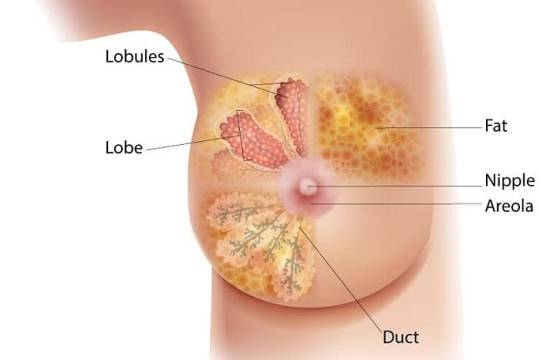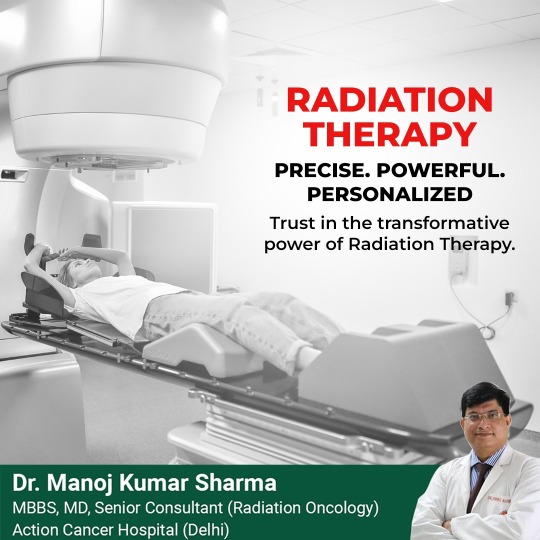#integrative oncology
Text
Revolutionizing Cancer Treatment: The Ayurvedic Approach to Holistic Healing
#ayurveda#ayurvedic treatment#ayurvedic treatment center#Ayurvedic Cancer Treatment#Natural Cancer Therapies#Herbal Cancer Remedies#Ayurveda for Cancer Care#Alternative Cancer Treatment#Holistic Cancer Healing#Ayurvedic Cancer Cure#Integrative Oncology#Ayurvedic Cancer Support#Traditional Cancer Healing#Ayurvedic#Herbal Therapies#Ayurvedic Medicine for Cancer#Cancer Prevention in Ayurveda#Ayurvedic Cancer Wellness#Ayurvedic Approach to Cancer#Herbal Remedies for Cancer#Ayurvedic Cancer Management#Ayurvedic Cancer Recovery#Ayurvedic Oncology Solutions#Complementary Cancer Care
3 notes
·
View notes
Text

Discover safe and proven natural treatments for cancer with AposBook. Explore our comprehensive guide to alternative therapies, dietary changes, and holistic approaches to support your cancer treatment journey. Learn about evidence-based natural remedies and empower yourself with valuable information to complement your conventional cancer treatment plan.
0 notes
Text
Dynamic Cancer Journey Monitoring: Pioneering Integrative Oncology at ZenOnco.io
Introduction:
The battle against cancer is a multi-faceted journey that spans from the initial detection to intercepting its progress and monitoring resistance in metastatic stages. In this era of advanced medical science, the pursuit of dynamic cancer monitoring has led to the emergence of Integrative Oncology, a holistic approach that combines conventional and complementary therapies. At ZenOnco.io, we're not just offering cancer treatment; we're revolutionizing the way cancer care is approached, from India to the world.
The Landscape of Cancer Treatment in India: A Paradigm Shift
India has emerged as a global hub for cutting-edge medical treatments, and cancer care is no exception. With world-class facilities and a growing pool of skilled medical professionals, India offers a compelling choice for individuals seeking the best cancer treatment. Among the many cities at the forefront, Bangalore stands tall as a centre of excellence in healthcare.
ZenOnco.io: Redefining Cancer Care through Integrative Oncology
ZenOnco.io isn't just a name; it's a commitment to revolutionize cancer care. Our philosophy centres around Integrative Oncology, a comprehensive approach that synergizes conventional therapies with complementary techniques. This unique blend addresses the physical, emotional, and psychological aspects of the cancer journey.
A Holistic Approach: From Detection to Monitoring of Resistance
Our approach to cancer treatment transcends the traditional boundaries. We understand that the journey starts with early detection, moves through interception, and requires vigilant monitoring in cases of metastatic cancer. At ZenOnco.io, every step is meticulously orchestrated, ensuring that patients receive the best possible care.
Dynamic Monitoring: Staying Ahead of Resistance
Resistance to treatment is a daunting challenge in the realm of cancer care. ZenOnco.io employs state-of-the-art techniques to dynamically monitor the progression of resistance, enabling our medical experts to adapt treatment plans and provide the most effective interventions.
Excellence in Bangalore: The Epitome of Cancer Care
When it comes to cancer treatment, Bangalore stands as a beacon of excellence. ZenOnco.io's centre in Bangalore exemplifies the convergence of technology, innovation, and compassionate care. Our commitment to offering the best cancer treatment in Bangalore is unwavering.
Affordable Excellence: Cancer Treatment Cost in India
At ZenOnco.io, we believe that quality healthcare should be accessible to all. Our commitment to affordable excellence ensures that our services remain within reach, making us a preferred choice for individuals seeking exceptional cancer care without breaking the bank.
Conclusion: Pioneering the Future of Cancer Care
The cancer journey is a dynamic process that demands a proactive, holistic, and patient-centric approach. ZenOnco.io rises to this challenge, redefining the landscape of cancer treatment in India and beyond. With a focus on Integrative Oncology, cutting-edge technology, and a commitment to affordability, we stand as a beacon of hope for individuals and families on the cancer journey. Join us as we pioneer a new era in cancer care, one that empowers patients and brings them closer to a healthier, brighter future.
About ZenOnco.io
ZenOnco.io is a trailblazing name in the world of cancer care, dedicated to providing Integrative Oncology solutions that combine the best of conventional and complementary therapies. With a commitment to excellence, affordability, and patient-centric care, ZenOnco.io is revolutionizing the way cancer is treated, from detection to interception and beyond.
For more information
Call us: +91 99307 09000
Visit us: https://zenonco.io/
Other Service Links:
https://zenonco.io/cancer/ayurveda-for-cancer
Follow us:
https://www.facebook.com/ZenOnco.ioOfficial
https://www.instagram.com/zenoncoio
https://in.linkedin.com/company/zenonco-io
https://twitter.com/ZenOncoIOhttps://www.youtube.com/c/ZenOncoIo
0 notes
Link
#weight loss australia#weight loss program#integrative oncology#lose weight#weight loss#naturopathy#facial therapy#massages therapy#Online Naturopathy#Natural Therapies#weight management
0 notes
Text
Papers Reviewed:
2021 Aug (Wong et al) - Pomegranate bioactive constituents target multiple oncogenic and oncosuppressive signaling for cancer prevention and intervention
2022 Feb (Cheshomi) - The effects of ellagic acid and other pomegranate (Punica granatum L.) derivatives on human gastric cancer AGS cells
2023 Jan (Teniente et al) - Anticancer Effect of Pomegranate Peel Polyphenols against Cervical Cancer
2023 Apr (Habchi et al) - Determination of the Antioxidant and Antiproliferative Properties of Pomegranate Peel Extract Obtained by Ultrasound on HCT-116 Colorectal Cancer Cell Line
2023 July (Rahman et al) - Pomegranate-specific natural compounds as onco-preventive and onco-therapeutic compounds: Comparison with conventional drugs acting on the same molecular mechanisms
3 notes
·
View notes
Text
Drug Discovery and Development Services | Pre Clinical DMPK Services | Aryastha
Explore Aryastha's robust Drug Discovery and Development Services. Our adept team specializes in advanced Pre Clinical DMPK Services, ensuring a smooth progression from drug conception to development.

#Drug Discovery and Development Services#Medicinal Chemistry and Drug Discovery#Oncology Services#Immunology Services#Drug Development Services#Integrated Drug Discovery Services#Pre Clinical DMPK Services
0 notes
Text
Innovating HealthCare Solutions: Aryastha Life Sciences Pioneers Drug Discovery and Development
Aryastha Life Sciences, headquartered in Hyderabad's renowned Genome Valley, is at the forefront of revolutionizing the pharmaceutical industry. Specializing in drug discovery and development services, Aryastha offers a comprehensive suite of solutions aimed at addressing critical healthcare challenges.
With a focus on medicinal chemistry and drug discovery, Aryastha leverages cutting-edge technologies and interdisciplinary approaches to identify novel therapeutic targets and develop innovative drug candidates. The organization's robust Discovery Chemistry and Discovery Biology services enable the rapid optimization of lead compounds, paving the way for the development of new drugs to combat various diseases.
Aryastha's commitment to advancing cancer research is evident through its Oncology Services, which encompass target identification, lead optimization, and preclinical evaluation of anti-cancer agents. Through strategic collaborations and pioneering research initiatives, Aryastha aims to bring promising oncology therapies to market, providing hope to patients worldwide.
Moreover, Aryastha's Immunology Services play a crucial role in the development of immunotherapies and biologics for the treatment of autoimmune disorders and infectious diseases. The organization's expertise in immunology, coupled with state-of-the-art facilities, enables the rapid assessment of drug candidates' efficacy and safety profiles.
In addition to its discovery-focused services, Aryastha offers Pre-Clinical DMPK (Drug Metabolism and Pharmacokinetics) and Development Services, facilitating the transition of drug candidates from preclinical studies to clinical trials. Through rigorous testing and optimization, Aryastha ensures that its clients' drug candidates meet regulatory standards and exhibit optimal pharmacokinetic properties.
Aryastha Life Sciences is dedicated to driving innovation in drug discovery and development, with a vision to improve global healthcare outcomes. By combining scientific expertise, technological innovation, and a commitment to excellence, Aryastha continues to redefine the boundaries of pharmaceutical research and development, ultimately benefiting patients worldwide.

#Drug Discovery and Development Services#Medicinal Chemistry and Drug Discovery#Oncology Services#Immunology Services#Drug Development Services#Integrated Drug Discovery Services#Pre Clinical DMPK Services
0 notes
Text
Features of Medical Billing Software
If you are in the market for medical billing software, you need to make sure that it has the features you need to run your medical practice efficiently. It will record and store every invoice, helping to prevent duplicate claims and improve patient care. To know more visit the website https://www.shavara.com/
#Medical Billing Software#Medical Oncology Billing Software#Medical Claim Scrubber#Record and Verify Integration
0 notes
Link
In order to establish standardized high-throughput whole-genome sequencing (WGS) for patients with cancer and rare diseases, the UK Government launched the groundbreaking 100,000 Genomes Project within the National Health Service (NHS) in England. This was accomplished through the use of an automated bioinformatics pipeline accredited by the International Organisation for Standardisation. Operating in conjunction with NHS England, Genomics England examined WGS data from 13,880 solid tumors representing 33 different cancer types, fusing genetic information with actual treatment and outcome data in a secure research environment.
WGS and longitudinal life course clinical data were linked, enabling the evaluation of treatment results for patients categorized by pangenomic markers. The results of this study show how useful it is to connect genomic and practical clinical data in order to do survival analysis, locate cancer genes that influence prognosis, and deepen our knowledge of how cancer genomics affects patient outcomes.
Using an automated bioinformatics pipeline accredited by the International Organisation for Standardisation, the 100,000 Genomes Project was a ground-breaking UK Government initiative implemented within the National Health Service (NHS) in England with the goal of establishing standardized high-throughput whole-genome sequencing (WGS) for patients with cancer and rare diseases.
Continue Reading
31 notes
·
View notes
Text
Breast Cancer

Introduction
Breast cancer, a multifaceted and prevalent disease, poses a significant health challenge globally, transcending gender lines with its potential impact. Characterized by the abnormal proliferation of cells within breast tissue, breast cancer’s complex etiology remains an area of intense study and concern. Despite notable advancements in medical science and increased awareness, it continues to be a leading cause of morbidity and mortality worldwide. This comprehensive discussion aims to delve into the intricacies of breast cancer, encompassing its causes, risk factors, prevention strategies, diagnostic modalities, treatment options, and the evolving landscape of supportive care.
Causes and Risk Factors

Understanding the underlying causes and risk factors associated with breast cancer is paramount in developing effective prevention and management strategies. While the precise etiology of breast cancer remains elusive, various genetic, hormonal, environmental, and lifestyle factors contribute to its onset and progression. Genetic predispositions, such as mutations in the BRCA1 and BRCA2 genes, significantly elevate the risk of developing breast cancer. Additionally, hormonal influences, including early onset of menstruation, late menopause, and hormone replacement therapy, play a crucial role in disease pathogenesis. Lifestyle factors such as excessive alcohol consumption, obesity, lack of physical activity, and exposure to environmental carcinogens further augment the risk profile.
Preventive Measures

Empowering individuals with knowledge about preventive measures is essential in mitigating the burden of breast cancer. Promoting regular breast self-examinations, clinical breast examinations, and mammographic screenings facilitates early detection and intervention. Emphasizing lifestyle modifications, including maintaining a healthy weight, adopting a balanced diet rich in fruits and vegetables, limiting alcohol intake, and engaging in regular physical activity, can reduce the risk of breast cancer. For individuals with a heightened risk due to genetic predispositions or familial history, prophylactic surgeries, such as mastectomy or oophorectomy, and chemo preventive agents offer viable preventive options.
Diagnostic Modalities

Advances in diagnostic modalities have revolutionized the early detection and diagnosis of breast cancer, enabling prompt initiation of treatment and improved clinical outcomes. Mammography remains the cornerstone of breast cancer screening, capable of detecting abnormalities such as microcalcifications, masses, or architectural distortions. Complementary imaging techniques, including ultrasound, magnetic resonance imaging (MRI), and molecular breast imaging (MBI), enhance diagnostic accuracy, particularly in women with dense breast tissue or high-risk profiles. Biopsy procedures, such as core needle biopsy or surgical excision, facilitate histopathological examination, enabling precise diagnosis and classification of breast lesions.
Treatment Options

Tailoring treatment strategies to individual patient characteristics and disease parameters is essential in optimizing therapeutic outcomes in breast cancer. The treatment landscape encompasses a multidisciplinary approach, integrating surgical, medical, and radiation oncology interventions. Surgical options range from breast-conserving surgeries, such as lumpectomy or segmental mastectomy, to radical procedures like total mastectomy or modified radical mastectomy, depending on tumor size, location, and extent of spread. Adjuvant therapies, including chemotherapy, hormonal therapy, targeted therapy, and immunotherapy, aim to eradicate residual disease, prevent recurrence, and improve overall survival. Radiation therapy, administered either postoperatively or as a primary modality in selected cases, targets residual tumor cells, minimizing locoregional recurrence rates.
Supportive Care and Survivorship

Recognizing the holistic needs of breast cancer patients and survivors is integral in promoting comprehensive care and ensuring optimal quality of life. Supportive care interventions, including symptom management, psychosocial support, nutritional counseling, and rehabilitation services, address the multifaceted challenges associated with cancer diagnosis and treatment. Survivorship programs, focusing on survivorship care planning, surveillance for recurrence, long-term monitoring of treatment-related complications, and health promotion initiatives, facilitate the transition from active treatment to survivorship. Engaging patients and caregivers in survivorship care planning fosters empowerment, resilience, and a sense of agency in navigating the post-treatment phase.
Conclusion
In conclusion, breast cancer represents a formidable health challenge with profound implications for affected individuals, families, and communities worldwide. While significant strides have been made in understanding its pathophysiology, enhancing diagnostic capabilities, and expanding treatment options, concerted efforts are warranted to address existing gaps in prevention, early detection, and access to care. By fostering collaborative partnerships among stakeholders, advocating for evidence-based interventions, and promoting health equity, we can strive towards a future where breast cancer incidence and mortality rates are substantially reduced. Through continued innovation, education, and advocacy, we can transform the landscape of breast cancer care, offering hope, support, and healing to those impacted by this pervasive disease.
We wish you all the best in your medical education journey. In case you need any guidance or assistance during the learning process, do not hesitate to reach out to us.
Email at;
#fullmetal alchemist#healthcare#medical students#assignment help#puppies#aesthetic#ratblr#kittens#pets#plants#nursing student#nurse#nursing school#home nursing services#doctor who#fourteenth doctor#14th doctor#tenth doctor#medicine#medication#pharmacy#big pharma#pharmacy colleges#pharmacy student#pharmacy services#pharmacy school#pharmacy technician#health and wellness
8 notes
·
View notes
Text




Turkey Tail contains two types of critical protein-bound polysaccharides (carbohydrate) called PSP and PSK. PSP increases a special type of white blood cells that fights infection and boost immunity. PSK then comes in to activate these specialized white blood cells.

my names isabella and i talk in depth about uterine health, cancer preventative, alternatives to harsh chemicals, herbalism, herbs and mushrooms for brain damage and eye health. I talk briefly about epilepsy. diet and nutrition. diseases of the thyroid and adrenal gland. I’m not certified in anything but nutrition. i’ve been in the wellness field for 7 years now and have practiced it myself for longer.
i love talking information and health. our health is so intricate and not one of us is identical to another. may you be blessed with health and wellness. god bless you !
108 notes
·
View notes
Text
Cancer 101: The Bare Basics to Know if You've Been Diagnosed with Cancer

What is Cancer and How Does It Develop?
Cancer is a complex and multifaceted disease characterized by the uncontrolled growth and spread of abnormal cells in the body. These cells, known as cancer cells, can invade and destroy surrounding healthy tissues, impairing the normal functioning of organs and systems. Understanding how cancer develops involves diving into the intricate interplay of genetics, hormones, environmental, lifestyle, and immune factors.
At its core, cancer begins when mutations occur within the DNA of normal cells. These mutations can be caused by many factors, including exposure to chemicals and carcinogens, hormone disruptors. ultraviolet radiation, infection, and other stressors that affect the immune system. Additionally, genetic predispositions inherited from one's parents can also contribute to the development of cancer. As a result, cells begin to divide uncontrollably, forming a mass or tumor.
Staging and Grading of Cancer
Staging and grading are essential components of cancer diagnosis and prognosis, providing valuable information about the extent and aggressiveness of the disease.
Staging
Staging refers to the process of determining the extent of cancer spread throughout the body. It involves evaluating the size of the primary tumor, whether it has invaded nearby tissues or organs, and whether cancer cells have spread to regional lymph nodes or distant sites. Staging helps clinicians classify cancer into different categories, each with specific treatment approaches and prognostic implications. The most commonly used staging system is the TNM system, which stands for Tumor, Node, and Metastasis. It assigns a stage based on the size and extent of the primary tumor (T), the involvement of nearby lymph nodes (N), and the presence of metastasis (M). Staging provides valuable information for both treatment planning and prognosis.
Grading
Grading, on the other hand, evaluates the microscopic features of cancer cells and tissues to assess their level of differentiation and aggressiveness. Different cancers have distinct grading systems tailored to their specific characteristics. Typically, cancer cells are graded on a scale from low to high based on how closely they resemble normal cells in terms of structure, organization, and function. Low-grade cancers consist of well-differentiated cells that closely resemble normal tissue and tend to grow and spread more slowly. In contrast, high-grade cancers consist of poorly differentiated or undifferentiated cells with abnormal features and tend to grow and spread more rapidly. Grading helps clinicians predict how aggressively the cancer is likely to behave and guides treatment decisions, with higher-grade cancers often requiring more aggressive therapies.
What is a Tumor Marker and How is It Used?
A tumor marker is a substance produced by cancer cells or by the body in response to cancer. These substances can be found in blood, urine, or tissue samples and can serve as indicators of the presence, progression, or response to cancer treatment. Tumor markers are often proteins, enzymes, hormones, or other molecules that are either produced by cancer cells themselves or released into the bloodstream as a result of the body's immune response to cancer.
While tumor markers are useful in cancer diagnosis and management, it's important to note that they are not always specific to cancer and can also be elevated in other conditions, such as inflammation or benign tumors. Therefore, tumor markers are typically used in conjunction with other diagnostic tests and clinical assessments rather than as standalone tools for cancer diagnosis. Many times they can be used as indicators for whether or not imaging is necessary during or after treatment. They can also be used to monitor recurrence of disease.
What are the Different Kinds of Imaging Used for the Diagnosis and the Continued Evaluation of Cancer?
Imaging plays a crucial role in the diagnosis, staging, and ongoing evaluation of cancer. Different imaging modalities offer unique advantages in visualizing various aspects of cancer, such as the location, size, extent of spread, and response to treatment. Here are some of the most commonly used imaging techniques in cancer diagnosis and evaluation:
X-ray: X-rays are one of the oldest and most widely used imaging techniques. They are particularly useful in detecting abnormalities in bones, such as fractures or bone metastases. X-rays can also provide insights into the presence of lung tumors or abnormalities in the chest cavity.
Computed Tomography (CT) Scan: CT scans use X-rays to create detailed cross-sectional images of the body. CT scans are valuable for detecting and characterizing tumors in various organs, including the lungs, liver, pancreas, and abdomen. They can also help in staging cancer by revealing the extent of tumor spread to nearby tissues and lymph nodes.
Magnetic Resonance Imaging (MRI): MRI uses powerful magnets and radio waves to generate detailed images of soft tissues, such as the brain, spinal cord, muscles, and internal organs. MRI is particularly useful in imaging the brain, spinal cord, prostate, and musculoskeletal system. It provides excellent contrast resolution, making it valuable for detecting and characterizing tumors and assessing their relationship to nearby structures.
Positron Emission Tomography (PET) Scan: PET scans involve the injection of a radioactive tracer, which is taken up by rapidly dividing cells, such as cancer cells. PET scans can detect cancerous lesions anywhere in the body and provide information about the metabolic activity of tumors. When combined with CT (PET-CT), PET scans offer a powerful tool for cancer staging, treatment planning, and monitoring treatment response.
Ultrasound: Ultrasound uses sound waves to create real-time images of internal organs and tissues. It is commonly used to evaluate tumors in the breast, thyroid, liver, kidneys, and reproductive organs. Ultrasound is also used for guiding minimally invasive procedures, such as biopsies or needle aspirations, to obtain tissue samples for further analysis.
Mammography: Mammography is a specialized type of X-ray imaging used for breast cancer screening and diagnosis. It can detect breast tumors at early stages, often before they can be felt during a physical examination. Digital mammography and 3D mammography (tomosynthesis) are advanced techniques that provide higher sensitivity and improved image quality compared to traditional film mammography.
Endoscopy: Endoscopy involves the use of a flexible, lighted tube with a camera (endoscope) to visualize the inside of hollow organs or cavities, such as the gastrointestinal tract, respiratory tract, or urinary tract. Endoscopic procedures, such as colonoscopy, bronchoscopy, or cystoscopy, allow for direct visualization of tumors, tissue sampling (biopsy), and therapeutic interventions.
These imaging modalities, alone or in combination, enable clinicians to accurately diagnose cancer, determine its stage and extent of spread, plan treatment strategies, and monitor response to therapy over time. Each imaging technique has its strengths and limitations, and the choice of imaging modality depends on factors such as the type of cancer, location of the tumor, patient's health status.
Benign versus Malignant
The primary difference between a benign and malignant tumor lies in their behavior and potential to cause harm.
Benign Tumors
Benign tumors are non-cancerous growths that do not invade nearby tissues or spread to other parts of the body.
They typically grow slowly and remain localized, confined to the tissue or organ where they originated.
Benign tumors are usually well-defined and encapsulated, with cells that closely resemble normal cells in structure and function.
While benign tumors may grow and cause symptoms depending on their size and location, they do not have the ability to metastasize or spread to distant sites in the body.
In most cases, benign tumors are not life-threatening, and they can often be removed surgically with minimal risk of recurrence.
Malignant Tumors (Cancer):
Malignant tumors are cancerous growths characterized by uncontrolled cell growth, invasion of surrounding tissues, and the potential to metastasize to distant organs and tissues.
Cancer cells in malignant tumors have undergone genetic mutations that disrupt normal cellular functions, leading to abnormal growth, division, and behavior.
Malignant tumors can invade nearby tissues and organs, infiltrating surrounding structures and impairing their function.
The hallmark of malignancy is the ability of cancer cells to metastasize, spreading to distant sites in the body through the bloodstream or lymphatic system. Metastasis can lead to the formation of secondary tumors in vital organs, complicating treatment and prognosis.
Malignant tumors are often less well-defined than benign tumors, with irregular borders and heterogeneous cell populations.
Cancer is a serious and potentially life-threatening condition that requires prompt diagnosis and appropriate treatment, which may include surgery, chemotherapy, radiation therapy, targeted therapy, or immunotherapy.
What is Metastatic Disease? Metastatic disease, also known as metastasis, refers to the spread of cancer from its original (primary) site to distant organs or tissues in the body. Metastasis is a hallmark of malignant cancer and significantly impacts prognosis and treatment options.
When cancer cells break away from the primary tumor, they can travel through the bloodstream or lymphatic system to other parts of the body, where they establish secondary tumors. The process of metastasis involves several steps:
Invasion: Cancer cells invade nearby tissues or penetrate blood vessels or lymphatic vessels, allowing them to enter the circulation.
Transport: Cancer cells travel through the bloodstream or lymphatic system to distant sites in the body. The spread of cancer cells to distant organs or tissues can occur early in the disease process, even before the primary tumor is diagnosed.
Colonization: Cancer cells settle and establish secondary tumors in distant organs or tissues. The ability of cancer cells to survive and thrive in a new microenvironment depends on various factors, including interactions with the local tissue environment, immune responses, and the acquisition of specific genetic alterations.
Metastatic disease is a significant concern in cancer management for several reasons:
Prognosis: The presence of metastases is often associated with a poorer prognosis and decreased survival rates compared to localized cancer. Metastatic cancer is generally more challenging to treat and may require more aggressive therapies.
Treatment Considerations: Treatment decisions for metastatic cancer depend on factors such as the location and extent of metastases, the type and stage of the primary tumor, the overall health of the patient, and individual preferences. Treatment goals may focus on prolonging survival, relieving symptoms, maintaining quality of life, or aiming for a cure in select cases.
Multidisciplinary Approach: Managing metastatic cancer often requires a multidisciplinary team of healthcare professionals, including medical oncologists, surgical oncologists, radiation oncologists, pathologists, radiologists, and supportive care specialists. Treatment plans may involve a combination of surgery, chemotherapy, radiation therapy, targeted therapy, immunotherapy, and palliative care to address the needs of the patient comprehensively.
While metastatic disease poses significant challenges in cancer care, advances in treatment strategies, including targeted therapies and immunotherapies, have improved outcomes for many patients with metastatic cancer. Research continues to focus on understanding the mechanisms of metastasis, developing new therapeutic approaches, and improving patient outcomes in metastatic disease.
Common Treatments for Cancer
The treatment of cancer often involves a combination of different modalities tailored to the specific type and stage of cancer, as well as individual patient factors such as age, overall health, and preferences. Some of the most common treatments for cancer include:
Surgery: Surgery involves the removal of cancerous tumors and surrounding tissues. It is often the primary treatment for solid tumors that are localized and have not spread to other parts of the body. Surgery may be curative if the cancer is detected early and completely removed, or it may be used to relieve symptoms, improve quality of life, or debulk the tumor before other treatments such as chemotherapy or radiation therapy.
Chemotherapy: Chemotherapy uses drugs to kill cancer cells or stop them from growing and dividing. Chemotherapy can be administered orally, intravenously, or through injections and may be given alone or in combination with other treatments such as surgery or radiation therapy. Chemotherapy is commonly used to treat cancers that have spread to other parts of the body (metastatic cancer) or cancers that are sensitive to chemotherapy drugs.
Radiation Therapy: Radiation therapy uses high-energy X-rays or other forms of radiation to kill cancer cells or shrink tumors. Radiation therapy may be delivered externally using a machine (external beam radiation) or internally through implants or radioactive substances placed directly into or near the tumor (brachytherapy). Radiation therapy is often used as a primary treatment for localized cancers or in combination with surgery or chemotherapy to improve outcomes.
Targeted Therapy: Targeted therapy targets specific molecules or pathways involved in the growth and spread of cancer cells. Unlike chemotherapy, which affects both cancerous and healthy cells, targeted therapy is designed to selectively target cancer cells while minimizing damage to normal tissues. Targeted therapy drugs may include monoclonal antibodies, small molecule inhibitors, or other targeted agents that interfere with specific cellular processes or signaling pathways.
Immunotherapy: Immunotherapy harnesses the power of the immune system to recognize and attack cancer cells. Immunotherapy drugs work by enhancing the body's immune response against cancer cells or by blocking immune checkpoints that prevent the immune system from recognizing and attacking cancer cells. Immunotherapy has revolutionized cancer treatment in recent years and has shown promising results in a variety of cancers, including melanoma, lung cancer, and certain types of leukemia and lymphoma.
Hormone Therapy: Hormone therapy is used to treat cancers that are hormone-sensitive, such as breast cancer and prostate cancer. Hormone therapy works by blocking the production or action of certain hormones that stimulate the growth of cancer cells. It may involve the use of hormone-blocking medications or surgical removal of hormone-producing organs (e.g., ovaries or testes).
Bone Marrow Transplantation: Bone marrow transplantation, also known as stem cell transplantation, may be used to treat certain types of cancer, particularly blood cancers such as leukemia, lymphoma, and multiple myeloma. It involves replacing diseased or damaged bone marrow with healthy stem cells from a donor (allogeneic transplant) or from the patient themselves (autologous transplant).
These are some of the most common treatments for cancer, but there are other treatment options depending on kind of cancer, stage/grade, etc... In the future, I plan on sharing more about this topic, but for now, I hope this blog has given you a simple breakdown of the disease, how it's diagnosed and evaluated, and the most common types of treatment.
#cancer#chemotherapy#radiationtherapy#immunotherapy#cancer surgery#stem cell treatment#bone marrow transplant#hormonedrivencancer#cancer treatment#eastwestintegrativeoncology#yourcancerguru#cancer diagnosis#integrative oncology
0 notes
Text
Natural Treatments for Cancer | AposBook
Discover effective natural treatments for cancer at AposBook. Explore holistic healing solutions and alternative therapies to support your health journey. Learn more about integrative approaches to cancer care today!

#Natural Cancer Treatments#Holistic Cancer Therapy#Alternative Cancer Remedies#Integrative Oncology Solutions
0 notes
Text





September 21, 2023. London, United Kingdom.
Her Majesty Queen Letizia of Spain, honorary president of the Spanish Association Against Cancer (AECC) and it’s scientific foundation, visited Cancer Research UK today to commemorate the upcoming World Cancer Research Day.
World Cancer Research Day is an initiative of the Spanish Association Against Cancer (AECC) and promotes the importance of cancer research and highlights how integral continued investment in research is to achieve the scientific advances we need to beat cancer.
Her Majesty joined senior leaders from Cancer Research UK, the AECC, the Italian Foundation for Cancer Research (AIRC), and the European Society for Medical Oncology (ESMO) to recognise and celebrate international relationships in cancer research.
Her Majesty’s visit included a meeting focussed on international researchers collaborating on co-funded research programmes and a panel discussion dedicated to the three key themes of this year’s World Cancer Research Day: integrating diversity, advancing research, and achieving equity.
“Thank you so much for allowing me to be here today to see the successful teamwork between these organisations in this hard and complex journey of advancing in cancer research,” Her Majesty said.
Cancer Research UK’s partnership with AECC and AIRC began in 2016.
Since then, they have worked together to co-fund the Accelerator Awards, which have helped to forge some strong relationships between leading institutions in the UK, Spain and Italy.
Read more: https://news.cancerresearchuk.org/2023/09/21/queen-of-spain-visits-cancer-research-uk/
#spanish royal family#queen letizia#cancer research#queen letizia as honorary president of the spanish association against cancer#uk#london#bourbon
11 notes
·
View notes
Text
2 notes
·
View notes
Text
Showering Hope: Dr. Manoj Kr. Sharma Offers the Best Radiation Oncology Treatment in Delhi NCR
The world is united together to find the cure for cancer and the day a cure could be invented is not far ahead but about to knock our door. With the latest breakthroughs in research and development for cancer treatments worldwide radiation oncology is more precise and advanced with the cutting-edge technology of the 21st century.

The desperate fight against cancer begins with the search for perfect treatment and the best oncologist who can understand and eliminate cancer cells from the root cause for no recurrence. For patients who want the very Best Radiation Oncology in Delhi NCR, there is no better person to turn to and consult than Dr Manoj Kr. Sharma who is internationally renowned for his capabilities and compassionate care in the field of cancer treatments. Dr. Sharma is the best oncologist in Delhi for radiation oncology services that give hope and restore life to a healthy one for cancer patients globally.
Dr. Manoj Sharma Oncology - Best Radiation Oncology in Delhi NCR
Dr. Manoj Kr. Sharma, the top oncologist of Delhi NCR has a lot of experience in Oncology. Dr. Sharma is an experienced radiation oncologist with international expertise in providing state-of-the-art treatments that target cancerous cells precisely and accurately. Dr. Sharma has many years of experience in understanding the complicated nature of not only cancer care but also combining state-of-the-art technologies and unique creative techniques to craft personalized treatment plans for every patient and also accurately diagnose cancer at its earliest stages for a definite cure.
Benefits for Cancer Patients:
1. Personalized Treatment Plans: Dr. Sharma realizes that no two cancer cases are identical and neither should the treatment be the same. Therefore, he adopts a patient-based treatment approach, by evaluating every patient’s condition and developing personalized plans for radiation therapy which will maximize effectiveness while minimizing any side effects and promising a swift recovery towards a healthy future.
2. Advanced Technology: Dr. Sharma uses the latest technological developments in radiation oncology to treat cancerous cells with high accuracy and focus on the absolute annihilation of cancer infection. Patients receive advanced treatments with IMRT to IGRT, which are leading-edge techniques designed for perfection in effective treatment outcomes and promoting a healthier tomorrow.
3. Compassionate Care: Besides offering excellent oncological care, Mr. Manoj Kr. is loved for his compassionate and kind approach to cancer care, along with unfailing support toward his or her patients. He gives them important time and a patient ear to listen and understand their worries, address their fears and encourage them with the required support to help them take on their cancer-defeating journeys with strength and perseverance.
4. Comprehensive Approach: According to Dr. Sharma, the treatment of cancer should be not limited to radiation therapy only, but it should also include a combination of complementary therapies, medically evaluated nutritional support and regular psychosocial services in an integrated approach to cure the disease. By treating not only the major chemical aspects but also the physical, emotional and psychological aspects of cancer treatment for cancer patients he creates a more holistic approach which benefits patients in their recovery process.
Conclusion:
Within the unyielding fight against cancer, hope enlightens the way, guiding us to a world where we can live without this daunting enemy called cancer. Dr. Manoj Kumar Sharma is leading the charge in this battle, with his radiation oncology treatments in Delhi NCR. Radiotherapy has undergone revolutionary changes with technological developments and the development of science and research, it is now more effective and accurate than ever before. Dr. Sharma’s expert knowledge and caring approach represent the highest standards in cancer care, which gives patients plans for personalized treatment that takes into account the peculiarities of a person to provide maximum positive output.
When the world of cancer treatment still stands at a crossroads, Dr. Sharma’s dedication to quality oncology treatment solutions is a light that shines on and leads patients sailing safely through the sea of hope towards the future in which cancer is extinct. As shown by Dr. Sharma and the team, a cancer-free world is now closer than it has ever been through harnessing cutting-edge technologies. For more information or to schedule a consultation with Dr. Manoj Kr. Sharma, please visit https://www.drmanojsharmaoncology.com/ or Action Cancer Hospital, Delhi NCR.
2 notes
·
View notes